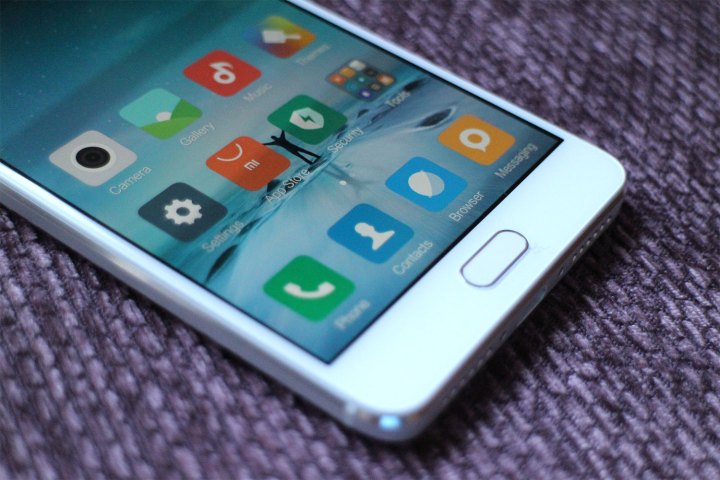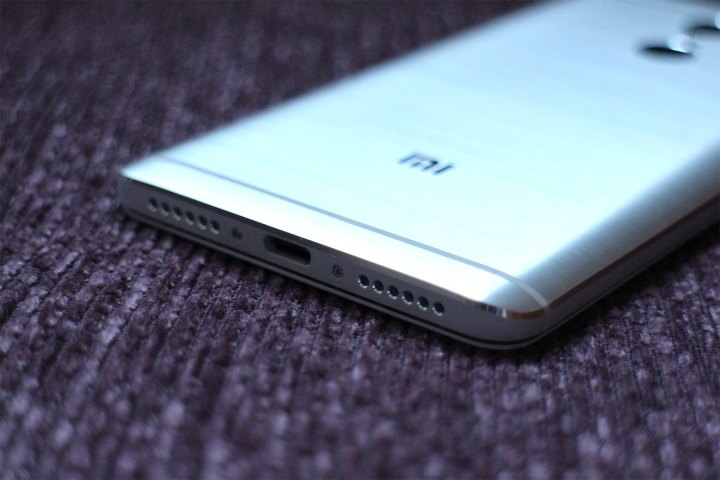“The Redmi Pro has two camera lenses for twice the fun, all at half the price of the competition.”
- Fun, easy to use dual-lens camera
- Fast processor and strong performance
- Beautiful AMOLED screen
- Low price
- Latest Android security patches
- Limited 4G connectivity
- Battery life disappoints
- Import only
You can’t buy a phone made by Xiaomi at Best Buy or through your local AT&T or T-Mobile store, but the Chinese brand now has a significant enough following (even amongst people who don’t consider themselves smartphone geeks) to attract interest. It’s easy to see why. Xiaomi phones have a reputation of being well built, well priced, and seriously desirable.
The Redmi Pro is one of its latest Xiaomi phones, and it has a dual-camera setup just like the Huawei P9, the Honor 8, and of course, the Apple iPhone 7 Plus. Except it’s yours for $250 if you go to an importer, and that’s a lot less than any of its competitors’ phones will cost you.
The price is tempting enough to make you consider the Redmi Pro, but the question is, should you spend the money and time to import the phone? We’ve been using the Redmi Pro to find out.
The design thickens with a giant battery inside
There will be many who look at the Redmi Pro and think, “This is the way all smartphones should look.” It’s not super slim, but it’s made from aluminum and the screen has thin bezels. There’s almost no branding at all, aside from the Mi logo on the rear, and the fingerprint sensor is mounted inside the home button. The speaker grills on the base sit on either side of a USB Type-C connector, and there’s a 3.5mm headphone jack on the opposite end, with an infrared blaster for company.
It’s 8.2mm thick because it packs a massive 4,050mAh battery. The trade-off of a thicker frame for a larger battery is one many will be happy to accept. It doesn’t make the Redmi Pro unwieldy, and the gentle curve of the rear panel — which echoes the gorgeous Xiaomi Mi 5 Pro’s body — means it fits happily in the palm of your hand. At 174 grams, it’s not the lightest phone, but it’s comfortable and compact enough to slip into your pocket. There’s a big screen fitted to this phone, but the body shrinks around it.
Our review model came in a brushed silver finish, but there is also a gold option, and it looks superb. The silver is brighter and shinier than the Honor 5X, for example, but it does attract smears and fingerprints easily. The home button incorporates the fingerprint sensor, but it’s an actual button, and you have to press it for the sensor to activate.
The metal body makes it cool to the touch and cool to look at. The Redmi Pro dismisses the super-slim frames seen on many premium phones, says bigger is equally beautiful, and it’s hard to disagree.
Dual cameras work wonders
Dual cameras are very popular right now. HTC started the craze, Huawei, ZTE, Honor, LG, and Apple have all continued it. The dual camera setup on the Redmi Pro consists of a 13-megapixel main lens and secondary 5-megapixel lens for capturing depth-of-field data, resulting in photos that can be manipulated to give that blurred bokeh effect.
The way it works is simple. In the camera app, tap the lens icon to enter what it calls Stereo mode, where you can adjust the aperture manually to achieve the desired level of blur. Tapping on the screen moves the focal point, and sliding a finger up and down over the focus icon changes the ISO. This live view makes taking bokeh pictures very easy. It allows you greater opportunity for composing strong photos, instead of saving the picture and messing around with focal points afterwards. Editing the image later on and saving multiple copies, is still possible, though.
The metal body makes it cool to the touch and cool to look at.
If you want great looking bokeh pictures on a budget, the Redmi Pro delivers. Closer examination reveals less than perfect edges around the in-focus objects, but you do have to look carefully. Most importantly, the live view lets you get really creative, and it’s possible to take some really fantastic pictures using the Redmi Pro. It’s a fun, very easy to use feature.
In comparison, bokeh pictures taken with the Huawei P9 and iPhone 7 Plus are of a higher quality, but remember the Redmi Pro costs a third of the price.
You’ll be happy with the images it takes during the day. It adores sunny days, and captures blue skies vividly, but is a little less competent in low-light due to an f/2.0 aperture. The phone has an excellent HDR mode, a panorama mode, and a basic manual mode where ISO and white balance can be adjusted.
You can flip to the front camera to take 5-megapixel selfies. The Redmi Pro has a variation on the traditional beauty mode, consisting of three settings to make your face appear less like it is in real life. There is an option to turn off all the enhancements, but you won’t want to do that after seeing what it does in Smart mode.
Smart mode changes the smoothness of your skin, its tone, and slims down your face in just the right parts. If that’s not enough, Pro mode puts you in control of all three aspects. The results are good, and Smart mode prevents that awful plastic look that sometimes comes with beauty modes, to the point where it could be used without feeling like a fraud.
The dual camera on the Redmi Pro is a solid reason to buy the phone, and the selfie cam a pleasant bonus.
Screen and software
The Redmi Pro is the first Xiaomi phone with an AMOLED screen, which is 5.5-inches and has a 1,920 x 1,080 pixel resolution. Performance is excellent, and streaming video looks great. The phone runs Android 6.0, but it’s very well hidden underneath Xiaomi’s MIUI 8.0 user interface, which changes the look of Google’s operating system quite dramatically.
MIUI 8.0 is very colorful, showing off the beauty of the AMOLED screen well, but it’ll be a shock to the system for anyone used to Android on a Nexus or Motorola phone. Like Huawei’s and ZTE’s user interfaces, MIUI does away with the app drawer, so all app icons are spread across various home screens. The notification shade is still there, but the shortcuts are presented in a scrolling list, and there’s a weather report above them.
It’s possible to take some really fantastic pictures using the Redmi Pro.
Our review unit of the Redmi Pro came without Google Play installed, so it had Xiaomi’s Mi app store instead. Side-loading Google Play is a straightforward exercise that took less than 15 minutes and provided access to all the usual Google apps and services.
However, you can buy the Redmi Pro as an International version, with Google Play already installed. We definitely recommend you go with the international one if you bother to import it. You will also want to add Google’s own keyboard to the Redmi Pro, too, because the MIUI one is optimised for use in China, and can be confusing and awkward to use. Don’t worry about the rest of the phone though, it’s all in English.
Xiaomi loads MIUI up with a lot of its own apps, ranging from the Mi smart home app, Mi Wallet for mobile payments, and quick access to its own music and video stores, to demo games and productivity apps. All but a few baked-in apps (such as Mi Wallet and the calendar) can be deleted, though.
There are many more features hidden behind the scenes. Dig through the settings to find a nighttime-friendly reading mode, a work and personal mode called Second Space, a shortcut button that stays on top of all home screens called Quick Ball, and much more. Xiaomi’s MIUI is highly customisable, so if you don’t like what you see, it can almost certainly be altered if you’re willing to put in the time.
MIUI has a very active online community, so any problems are often easy to solve, and advice is readily available. Xiaomi is also very quick to include Google’s Android security updates. Our Redmi Pro has the September Android security patch already installed in October, for example, way ahead of many other Android smartphones. It’s less likely to receive a timely update to Android 7.0 Nougat though, at least until Xiaomi gets MIUI working with the new version.
The lack of timely software version updates certainly cramps the Redmi Pro’s style, but we’re glad to see the security updates are coming in on time. Overall, MIUI is different to standard Android, but it’s not unpleasant to use, looks really pretty, and is fast, smooth, and completely customizable. We like it.
Processor, performance, and battery
Ten cores. That’s how many cores the processor inside the Redmi Pro has. It’s the MediaTek Helio X20 with 3GB of RAM, and it has been around since early 2015, although it hasn’t been a common sight in smartphones available internationally. We’ve been using the standard edition of the Redmi Pro, and if you want more power, there’s a version of it with the newer Helio X25 inside.
Lots of cores must mean lots of power, right? The Redmi Pro doesn’t disappoint. MIUI is snappy and smooth, and the processor happily plays the latest games at a sensible frame rate. Motorcycling game Traffic Rider rides well, and trusty bullet-hell shooter Danmaku Unlimited doesn’t slow down with the HD setting on and in both Normal and hyper-busy Hard mode.
The complex camera app is reliable, and although it does take a moment to process photos after hitting the shutter button, the editing and focus shift feature work without delay.
It will receive 2G and 3G signals on AT&T and T-Mobile, but isn’t compatible with the 4G network.
It’s not all good news, though, and the MediaTek X20 can get hot, Not so much when playing games, but more so when using some of Xiaomi’s online apps. There’s never any concern the phone will overheat, but it’s definitely warm to the touch at the top of the rear panel. This leads us onto the battery, which may suffer from either poor optimization or the build up of that heat.
A 4,050mAh battery should return plenty of energy to make a moderately sized smartphone for a couple of days. We found that using the phone seriously — that’s the camera, benchmarks, games, and social networking — for an afternoon gobbled up 40 percent of the battery. It was hard to get more than a day’s worth of hard use out of the Redmi Pro, which was a disappointment. We’re not convinced this is an unfixable problem, and it’s one that may be improved with software updates. Also, under more modest use, the battery lasts for nearly two working days. For now, though, the expectation presented by a 4,050mAh battery isn’t quite realized.
The Redmi Pro’s battery suffers another blow because it doesn’t have any fast charging system. Plug it in and it takes at least two hours to charge.
Connectivity, warranty, and availability
Importing a phone presents some unique challenges. The first, and probably most important thing, is will it work on available networks? The Redmi Pro that’s currently available is a Chinese GSM smartphone, so it will receive 2G and 3G signals on AT&T and T-Mobile, but isn’t compatible with the 4G network. It’s slightly different in the U.K., where it has partial 4G connectivity. We tested the phone using Three’s network in the U.K., and while it did grab 4G in London, the 3G signal was often its preference.
It’s a shame, because we can’t recommend you buy the phone since it doesn’t support 4G in the States.
The next problem is what to do if the phone is broken when it arrives, or you need to claim on the warranty. Our review Redmi Pro was supplied by GearBest.com, a popular online retailer specialising in Chinese technology. Purchased through GearBest, the phone comes with a three-day dead-on-arrival warranty, a 45-day money back guarantee if the phone should be faulty during that time, plus a one-year warranty to cover against defects. If you’ve changed the software, taken the phone apart, or if it breaks due to mistreatment, then it won’t be covered. You’re also responsible for some of the shipping fees in some situations.
The Xiaomi Redmi Pro is available through GearBest for just under $250 with free shipping. Other electronics importers offer it, too. Of course, importing a phone also means if you have questions, want advice, or any other service you’ll have to do this by email with the company through which you bought it.
Our Take
The Xiaomi Redmi Pro boasts the latest dual-camera tech, wrapped up in a stylish metal body, all for $250 without a contract and unlocked. That’s a great deal. However, if you’re in the U.S. and require 4G connectivity, then the current version of the Redmi Pro isn’t the phone for you. Xiaomi does release “global” phones with wider bandwidth compatibility, and GearBest informed us that such a version is expected, but it won’t come just yet.
What are the alternatives?
The highly competitive price makes finding an alternative quite a challenge. Motorola’s G4 Plus is the closest competitor, although it won’t match the Redmi Pro in the camera department. A little cheaper is the Honor 5X, and even cheaper still is the Honor 5C, but neither offers the strong spec that makes the Redmi Pro desirable. Go a little older, and the impressive Moto X Play can be found for a bargain price. It’s a similar story for the HTC One A9, a 2015 phone that costs much less than its original $500 price tag today.
If you have more money hidden away, then the Honor 8 is close to the Redmi Pro, while being easier to buy, easier to live with, and just as easy on the eye. Except it’s $400, and that’s quite the jump. It’s the same for the dual-camera Huawei P9, which is on average $600, and the iPhone 7 Plus, which is at least $750.
How long will it last?
Xiaomi is dedicated to software updates, and we consider its phones to be one of the better options outside Google’s camp if you always want to stay completely up to date in terms of security patches. That’s not the case for version changes though, which will be slower than those for Pixel and Nexus phones.
The Redmi Pro’s not water resistant, and no more durable than any other regular smartphone made today, so if you drop it, especially in water, there could be a big repair bill involved. Otherwise, the specification is strong, there’s 64GB of internal memory and a MicroSD card slot, so if you treat it well the phone has years of use ahead of it.
Should you buy it?
No, not if you live in the U.S. or U.K. The lack of 4G connectivity in the U.S. is a serious problem. The phone is great, the camera extremely competent, and its special features highly enticing. We even like MIUI. Add in that we don’t have to spend much to buy it, and under any other circumstances, we’d be telling you to rush out and buy it right now. Sadly, the lack of connectivity makes the Redmi Pro a no go.
Keep an eye out for a revised version with proper global connectivity, and then you may be able to pick up a real super camera phone bargain.



















